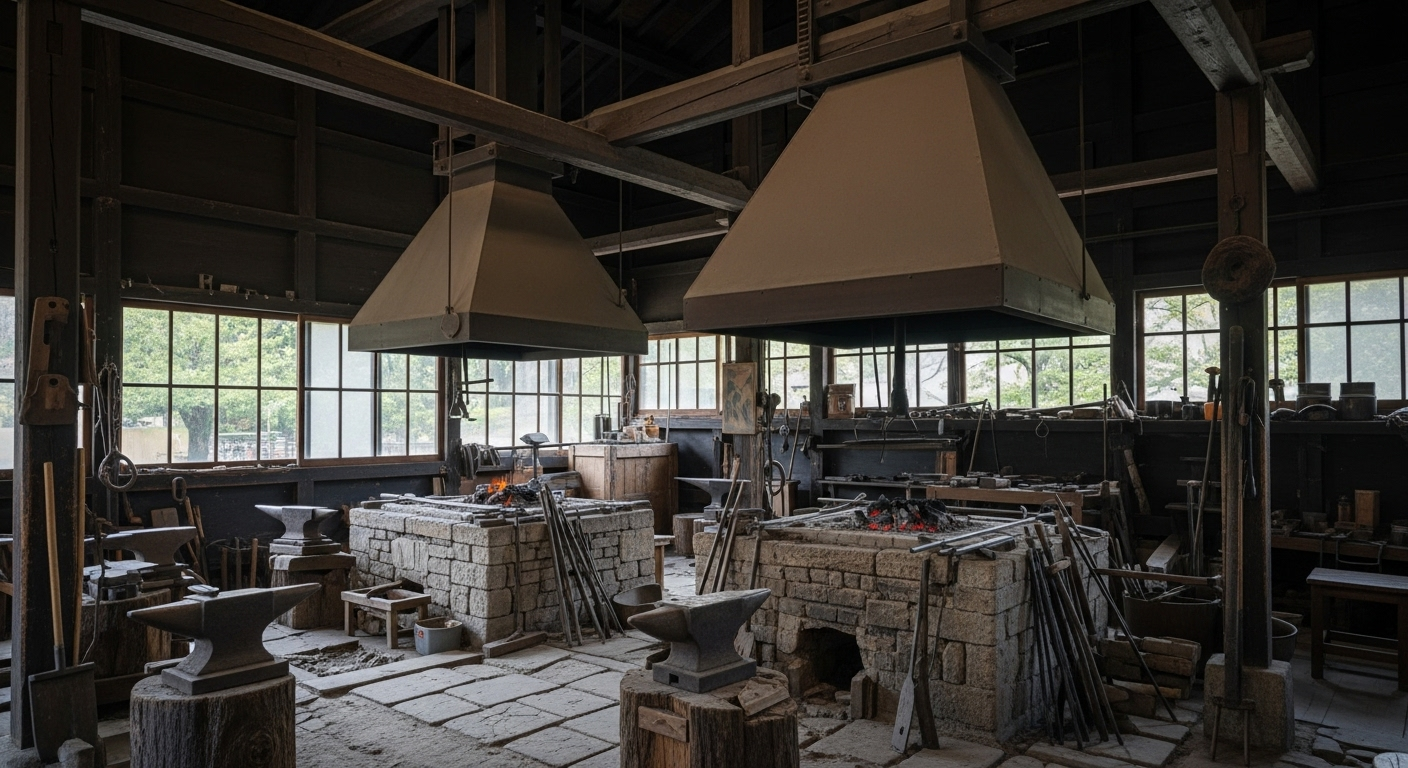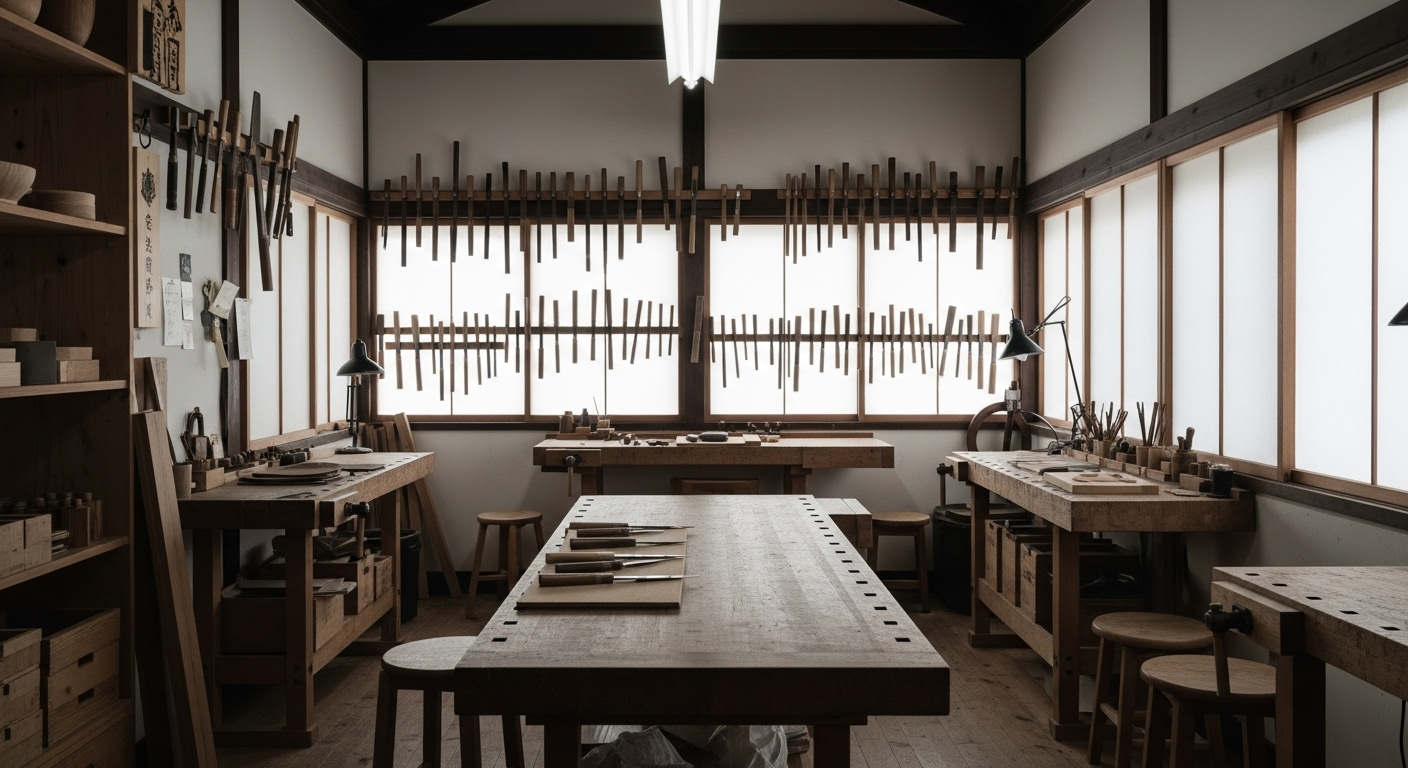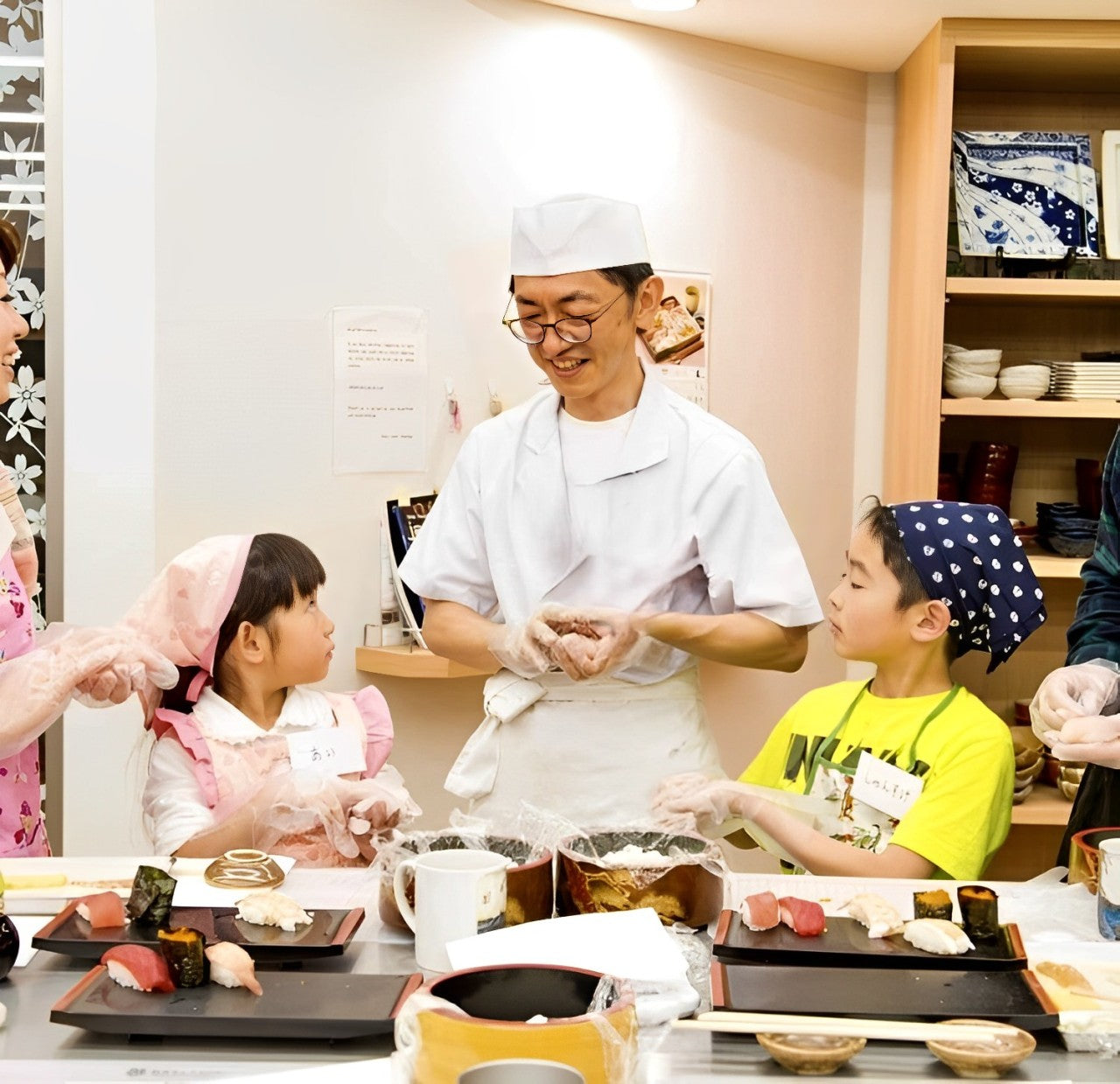
The Art of Forging: Crafting the Finest Japanese Knives
-
APRIL 12, 2023
-
Understanding Forging in Traditional Japanese Bladesmithing
Forging (Tanzo) is the heart of Japanese bladesmithing, a craft perfected over centuries in regions like Sakai. This labor-intensive process involves heating steel and soft iron to high temperatures and meticulously hammering them together. Unlike mass-produced blades, this method refines the internal grain structure of the metal, creating a blade of unparalleled strength and sharpness.
-

Forging vs. Stamping: A Contrast in Techniques
Forging (The Artisan’s Path):
Through repeated hammering, the blacksmith removes impurities and aligns the metallic structure. This creates a "fiber flow" that ensures the blade is both incredibly hard and resilient. Forged knives often feature a "distal taper"—thick at the spine for strength and thin at the edge for precision.Stamping (The Industrial Path):
Most modern commercial knives are "stamped," meaning they are punched out of large, cold-rolled steel sheets using a machine press. While this method is efficient and produces consistent results, it lacks the refined grain structure and the unique "soul" found in a hand-forged blade. -
The Prestige of Forged Japanese Knives
Traditional Japanese cuisine relies on the exceptional quality of Honyaki (solid steel) and Kasumi (high-carbon steel laminated with soft iron) knives. Both are forged by hand, but they require different levels of mastery. These masterpieces are prized not only for their surgical sharpness but also as symbols of the maker's dedication and the chef's professional discipline.
-

-
Characteristics of Forged Knives
Forged knives are distinguished by:
- Refined Steel Structure: Hammering creates a dense grain that ensures superior edge retention and a "toothy" sharpness that bites into ingredients.
- Exceptional Balance: Because the thickness is hand-adjusted during forging, the knife feels like an extension of the chef's arm.
- The Mark of the Smith: Each blade bears subtle variations from the hammer and the fire, making every piece a unique work of art.
-

-
Conclusion: The Spirit in the Steel
A forged knife is more than a tool; it is a living symbol of tradition and patience. Each strike of the hammer refines not only the steel but the spirit of the craftsman. When a chef holds a forged Sakai knife, they hold centuries of wisdom—steel transformed into art, promising beauty and precision in every cut.
The Soul of the Blade: The Art of Japanese Forging
-

Japanese forging is a meticulous, time-honored craft that transforms steel into a blade of exceptional quality.
Through repeated heating, hammering, and tempering, the steel’s structure is refined, creating a knife with enduring sharpness, strength, and cultural significance.
Forged blades are more than tools—they are expressions of craftsmanship and heritage. -

The Making of Japanese Knives
For over six centuries, Sakai’s artisans have transformed raw steel into blades of extraordinary sharpness and beauty. From forging and heat treatment to sharpening and handle fitting, each step carries the spirit of tradition—revealing why Japanese knives are trusted by chefs around the world.

The Soul of Craftsmanship
-
The Moment the Wind Passes Through the Heart
Working as a traditional craftsman of Japanese knives is like gazing into a mirror that reflects the truest self. In the relentless pursuit of perfection, I once struggled to forgive my own shortcomings and failures. But over time, I realized something profound: accepting even the flawed parts of myself is essential to the journey.
-
The tiny scratches on a blade, the subtle irregularities in sharpening—facing them honestly, correcting when possible, and sometimes leaving them as they are—taught me an invaluable lesson. Within these imperfections, I began to feel a quiet wind passing through my heart.
-
Weaknesses and mistakes are not stains to be hidden. They are part of a craftsman’s character. Just as a knife does not need to be flawless to serve, a person does not need to be perfect to shine. It is individuality—the small imperfections—that allow a tool to fit seamlessly into someone’s hand, or resonate deeply in someone’s heart.
-
The day I finally told myself, “It’s okay to just be me,” the tension lifted, and a new sense of flow entered my work.
To all who read this, be gentle with yourselves. Let the wind pass through your heart, and you may discover something quietly beautiful—in both life and in craft.

Blog Author: Toru
-Professional background-
・Graduated from Tokyo Sushi Academy
・Sushi lesson instructor at Tsukiji Tokyo
・Making sushi at RC Show, one of Canada's largest Toronto food shows
Traditional Japanese knives, like those from Sakai City, are globally prized for their sharpness and elegance. Yet, Sakai's dwindling artisans pose a challenge to preserving this craft. To combat this, I'm dedicated to spreading the brilliance of Japanese knives worldwide. My dream is to sustain Sakai's legacy while meeting global demand.

Experience the sharpness trusted by 98% of Japan’s top chefs — handcrafted in Sakai City.
Through our exclusive partnership with Shiroyama Knife Workshop, we deliver exceptional Sakai knives worldwide. Each knife comes with free Honbazuke sharpening and a hand-crafted magnolia saya, with optional after-sales services for lasting confidence.
KIREAJI's Three Promises to You
-

1. Forged in the Legacy of Sakai
From Sakai City—Japan’s renowned birthplace of professional kitchen knives—each blade is crafted by master artisans with over six centuries of tradition. Perfectly balanced, enduringly sharp, and exquisitely finished, every cut carries the soul of true craftsmanship.
-

2. Thoughtful Care for Everyday Use
Every knife includes a hand-fitted magnolia saya for safe storage. Upon request, we offer a complimentary Honbazuke final hand sharpening—giving you a precise, ready-to-use edge from day one.
-

3. A Partnership for a Lifetime
A KIREAJI knife is more than a tool—it is a lifelong companion. With our bespoke paid aftercare services, we preserve its edge and beauty, ensuring it remains as precise and dependable as the day it first met your hand.







